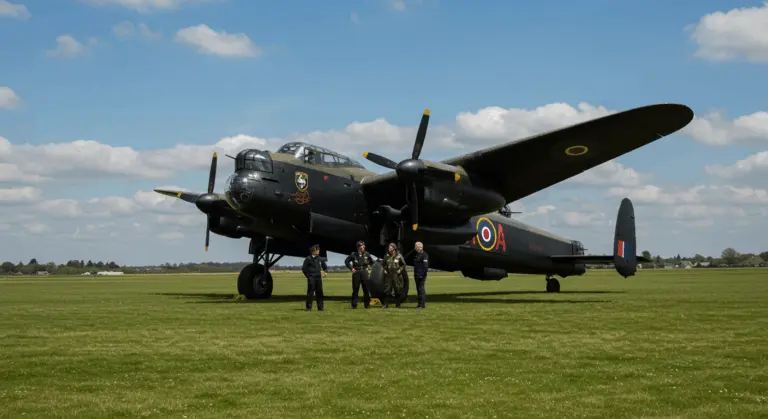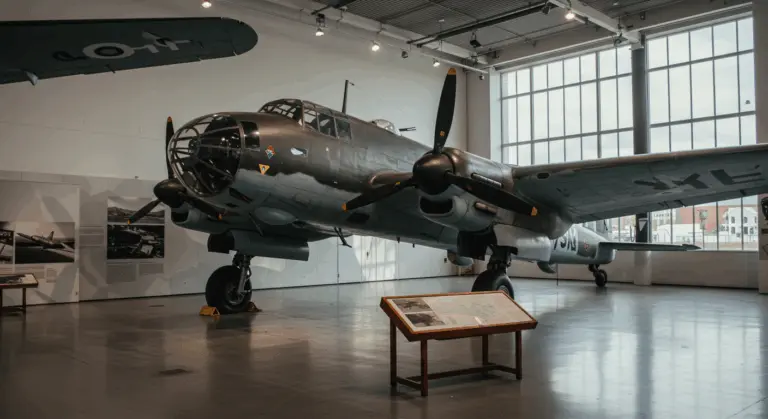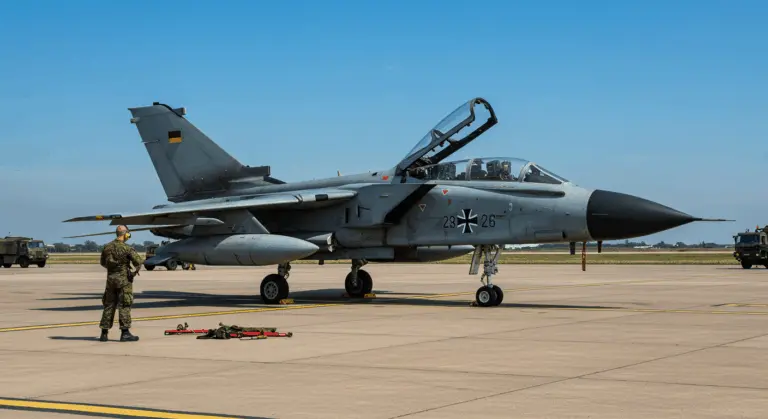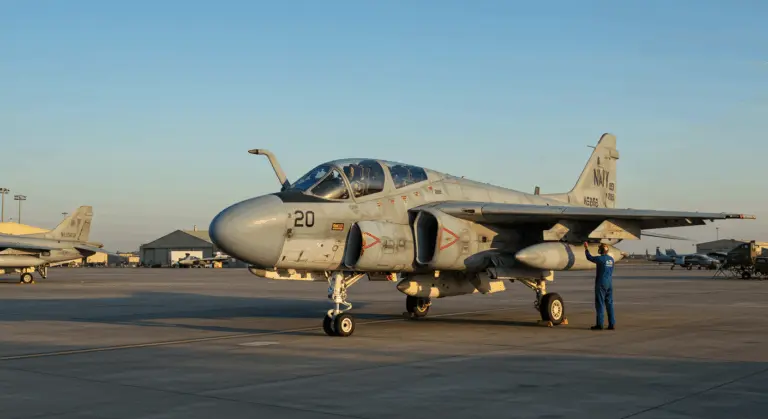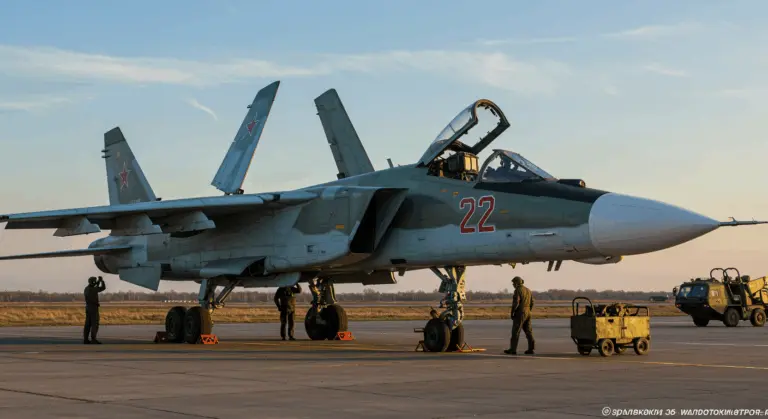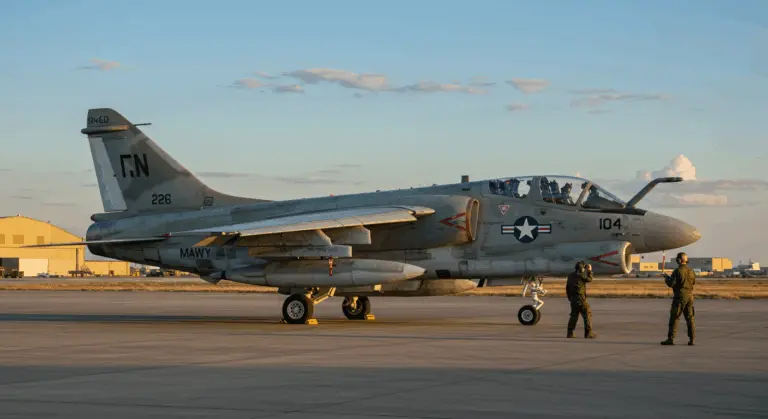Overview of the F-117 Nighthawk
The Lockheed F-117 Nighthawk stands as the world’s first operational stealth aircraft—a groundbreaking achievement that emerged from Lockheed’s secretive Skunk Works division for the U.S. Air Force. This single-seat, subsonic attack aircraft pioneered stealth technology and fundamentally transformed aerial warfare. Even after its official retirement, the Nighthawk’s influence continues to shape modern military aviation.
When the F-117 entered service in 1983, it marked the beginning of a new era of aerial warfare. Its ghostlike ability to slip through enemy airspace undetected handed the United States an unmatched tactical advantage. The aircraft’s striking angular geometry wasn’t just distinctive—it was deliberately crafted to scatter radar waves like light off a broken mirror. This near-invisibility to enemy sensors would prove decisive in conflicts to come.
From shadowy beginnings to headline-making missions, the Nighthawk proved stealth technology’s transformative power. It could strike high-value targets with surgical precision while keeping pilots out of harm’s way. Key deployments included:
-
Operation Just Cause (Panama, 1989)
-
The Gulf War (1991)
-
Conflicts in Yugoslavia (1999)
-
Operations in Afghanistan and Iraq (Post-2001)
Development of the F-117 Nighthawk
The F-117 Nighthawk’s genesis traces back to the mid-1970s, born from a U.S. Department of Defense vision: an aircraft that could ghost past radar and electronic sensors undetected. This ambitious project fell to the Defense Advanced Research Projects Agency (DARPA), who entrusted it to Lockheed’s legendary Skunk Works division. Leading the charge was Ben Rich, the brilliant engineer who had inherited the mantle from the iconic Kelly Johnson.
Building on the classified Have Blue program’s groundbreaking demonstrations, the F-117’s design represented the transition from experimental prototype to combat-ready aircraft. Engineers confronted an almost impossible puzzle: how do you make a 65-foot aircraft virtually disappear? The challenge demanded major advances across multiple disciplines—from exotic materials to radical design philosophies.
Achieving the Nighthawk’s exceptionally low radar signature required abandoning conventional aircraft aesthetics entirely. Instead of smooth, curved surfaces, engineers crafted an angular design of flat, angular panels—each precisely angled to deflect radar energy away from enemy receivers. These faceted surfaces received a coating of radar-absorbent materials that didn’t just deflect radar waves but actually absorbed them. The aircraft’s propulsion system proved equally innovative: non-after burning General Electric F404 engines nestled within specially designed exhaust systems, dramatically reducing the infrared signature that typically betrays military aircraft.
Key Milestones in Development
From drawing board to battlefield, the F-117’s journey unfolded through these pivotal moments:
-
Mid-1970s: DARPA and Skunk Works launch the program, building on the groundbreaking Have Blue demonstrator.
-
1977: Under a veil of absolute secrecy, the first prototype takes to the skies.
-
1981: The first production F-117 model completes its maiden flight.
-
1983: The Nighthawk begins its shadow war—operational but still officially nonexistent.
-
1988: After years of speculation, the Pentagon finally lifts the veil on the F-117.
-
1990: The final aircraft is delivered, completing the production run.
-
By 2019: The fleet accumulates over 150,000 flight hours, demonstrating its reliability.
Design Features of the F-117 Nighthawk
The F-117 Nighthawk’s design philosophy marked a complete break from aviation tradition—stealth trumped everything else. Conventional aerodynamic elegance gave way to an angular, almost alien geometry. Every surface was flat and precisely angled, creating a faceted diamond that seemed more sculpture than aircraft. This wasn’t aesthetic choice but scientific necessity: each angle was calculated to bounce radar waves anywhere except back to their source.
The angular exterior was just the beginning of the F-117’s stealth arsenal. A distinctive V-tail replaced conventional stabilizers, further minimizing radar returns from side angles. The twin General Electric F404 engines disappeared into the fuselage, their intakes and exhausts carefully sculpted to suppress both radar reflections and heat signatures. No afterburners meant no telltale infrared flare—a crucial advantage when invisibility was everything.
This unconventional design came with a price: the Nighthawk was aerodynamically unstable. Without constant computer intervention through fly-by-wire systems, the aircraft would tumble from the sky. Yet pilots found the cockpit surprisingly accommodating, with thoughtfully designed displays and controls that tamed this technological beast. Despite its subsonic limitations and specialized attack role, the F-117’s design demonstrated Skunk Works’ unmatched expertise in low-observability technology, establishing principles that would influence stealth aircraft development for decades to come.
Operational History of the F-117 Nighthawk
The F-117’s operational story began in shadows and secrecy, but its impact on modern warfare would prove anything but hidden. Combat debut came during Operation Just Cause in Panama, December 1989—precision strikes that announced a new era of warfare. But it was the 1991 Gulf War that fully demonstrated the Nighthawk’s transformative capabilities.
The 1990s belonged to the Nighthawk—America’s invisible sword. Kosovo in 1999 brought both triumph and a sobering lesson. Serbian forces, using modified Soviet air defenses and clever tactics, achieved what seemed impossible—they shot down a Nighthawk. This single combat loss—the only one in the F-117’s career—proved stealth wasn’t invincibility. But it hardly tarnished a remarkable record.
Post-9/11 operations in Afghanistan and the 2003 Iraq invasion kept the aging Nighthawk busy. Then came 2008 and official retirement. Or so it seemed. Years later, sharp-eyed observers began spotting familiar angular shapes in Nevada skies. The ghost refuses to stay buried—testament to both the F-117’s enduring value and the military’s reluctance to completely abandon such unique capabilities.
Notable Combat Missions
Long before public acknowledgment, the Nighthawk was already making history. Classified missions reportedly included a daring flight over Israeli airspace on May 9, 1979, and covert operations during the 1982 Lebanon War—years before most people knew such aircraft existed.
Desert Storm 1991: the F-117’s public debut. First night, first strikes: Nighthawks sliced through Baghdad’s defenses like ghosts, crippling command centers and clearing the way for conventional forces. The message was unmistakable—no defense was impenetrable when you couldn’t see the threat coming.
Kosovo 1999 started like previous campaigns—Nighthawks prowling enemy skies with impunity. Then Serbian ingenuity changed everything. Modified SA-3 missiles, unconventional radar techniques, and tactical brilliance combined to achieve the impossible. The pilot survived. The lesson was clear: even ghosts can be caught by those clever enough to change the rules.
Variants of the F-117 Nighthawk
The F-117A stood alone operationally, though ambitious variants beckoned from drawing boards:
-
F-117A: The primary production and operational version of the Nighthawk.
-
F-117N ‘Seahawks’: The Navy’s dream of carrier-based stealth died when engineers realized the delicate Nighthawk couldn’t handle the brutal stresses of carrier operations.
-
F-117B: An enhanced multi-mission variant that never flew—the future belonged to the F-22 Raptor instead.
Legacy and Retirement of the F-117 Nighthawk
In 2008, after 25 years of shadowy service, the F-117 Nighthawk officially hung up its wings. The F-22 Raptor had arrived three years earlier, representing everything the Nighthawk wasn’t: supersonic, multirole, and equipped with next-generation stealth technology. The student had surpassed the master.
Why retire a legend? Several factors converged. Maintaining stealth was expensive and labor-intensive—those radar-absorbent coatings demanded constant attention. Meanwhile, adversaries weren’t standing still. New radar technologies were chipping away at the Nighthawk’s invisibility cloak. The F-22 offered everything the F-117 provided, plus supersonic speed and air-to-air prowess the aging Nighthawk simply couldn’t match.
But retirement? That’s apparently negotiable. Years after the farewell ceremonies, those distinctive angular silhouettes keep appearing in Nevada and California skies. Research? Testing? Adversary training? The military isn’t saying, but the Nighthawk clearly isn’t done yet. What’s certain is the F-117’s transformative legacy. It proved stealth technology worked and rewrote the rules of aerial warfare, influencing every combat aircraft design that followed.
Specifications of the F-117 Nighthawk
| Specification | Details |
|—|—|
| Crew | 1 |
| Length | 65 ft 11 in (20.09 m) |
| Wingspan | 43 ft 4 in (13.21 m) |
| Height | 12 ft 5 in (3.78 m) |
| Max Takeoff Weight | 52,500 lb (23,814 kg) |
| Power plant | 2 × General Electric F404-F1D2 non-after burning turbofans |
| Maximum Speed | 623 mph (1,003 km/h; Mach 0.92) |
| Service Ceiling | 45,000 ft (14,000 m) |
| Combat Radius | ~600 nautical miles (690 mi; 1,110 km) |
| Armament | 5,000 lb (2,300 kg) internal payload, typically two 2,000 lb laser-guided bombs |
| Radar Cross-Section | ~0.001 m² (estimated) |

